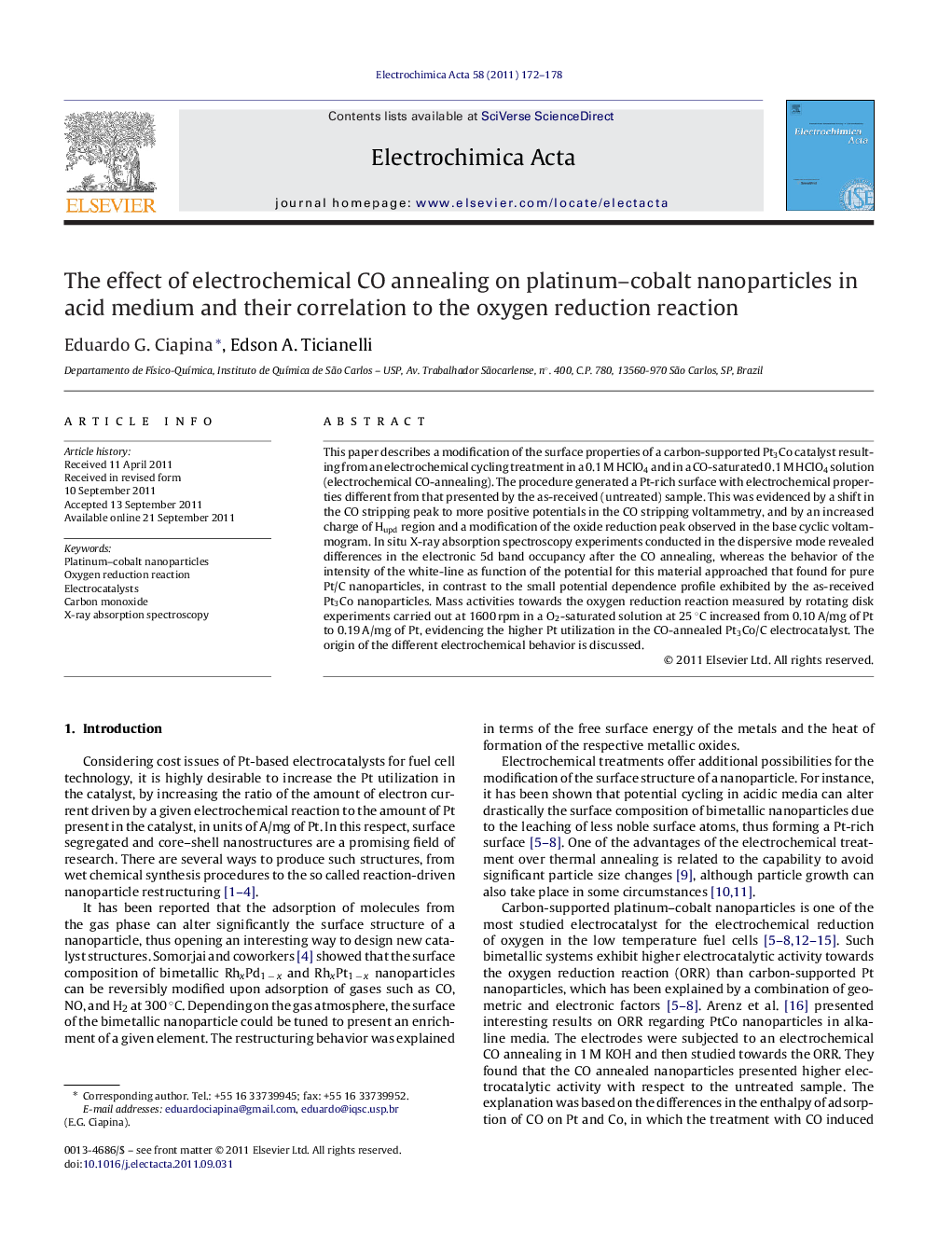| Article ID | Journal | Published Year | Pages | File Type |
|---|---|---|---|---|
| 189707 | Electrochimica Acta | 2011 | 7 Pages |
This paper describes a modification of the surface properties of a carbon-supported Pt3Co catalyst resulting from an electrochemical cycling treatment in a 0.1 M HClO4 and in a CO-saturated 0.1 M HClO4 solution (electrochemical CO-annealing). The procedure generated a Pt-rich surface with electrochemical properties different from that presented by the as-received (untreated) sample. This was evidenced by a shift in the CO stripping peak to more positive potentials in the CO stripping voltammetry, and by an increased charge of Hupd region and a modification of the oxide reduction peak observed in the base cyclic voltammogram. In situ X-ray absorption spectroscopy experiments conducted in the dispersive mode revealed differences in the electronic 5d band occupancy after the CO annealing, whereas the behavior of the intensity of the white-line as function of the potential for this material approached that found for pure Pt/C nanoparticles, in contrast to the small potential dependence profile exhibited by the as-received Pt3Co nanoparticles. Mass activities towards the oxygen reduction reaction measured by rotating disk experiments carried out at 1600 rpm in a O2-saturated solution at 25 °C increased from 0.10 A/mg of Pt to 0.19 A/mg of Pt, evidencing the higher Pt utilization in the CO-annealed Pt3Co/C electrocatalyst. The origin of the different electrochemical behavior is discussed.
► Modification of the surface properties of Pt3Co/C electrocatalyst. ► Electrochemical CO annealing in acid media generated a Pt-rich surface. ► In situ XAS revealed modifications in the Pt 5d band occupancy after CO annealing. ► The CO-annealed sample exhibited stronger interaction with oxygenated species. ► Increased Pt utilization in the CO-annealed Pt3Co/C electrocatalyst.
